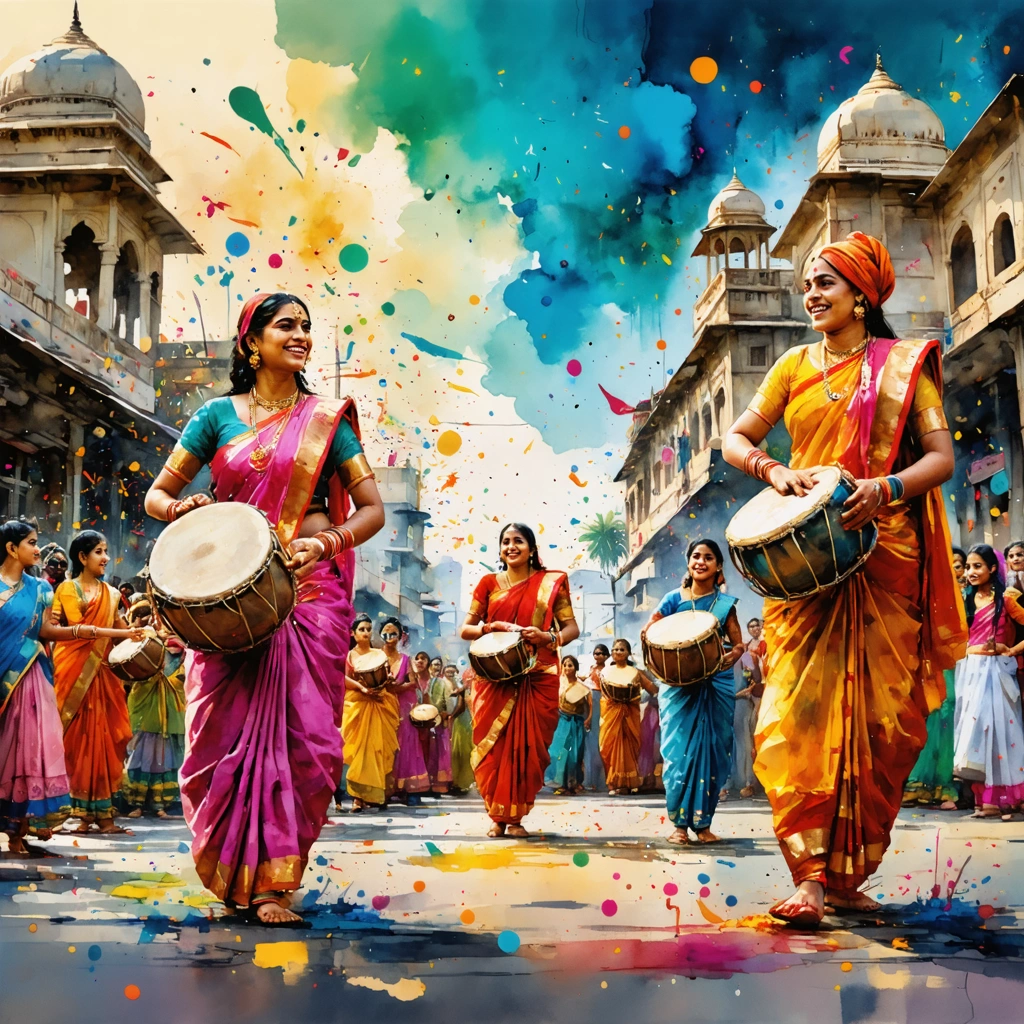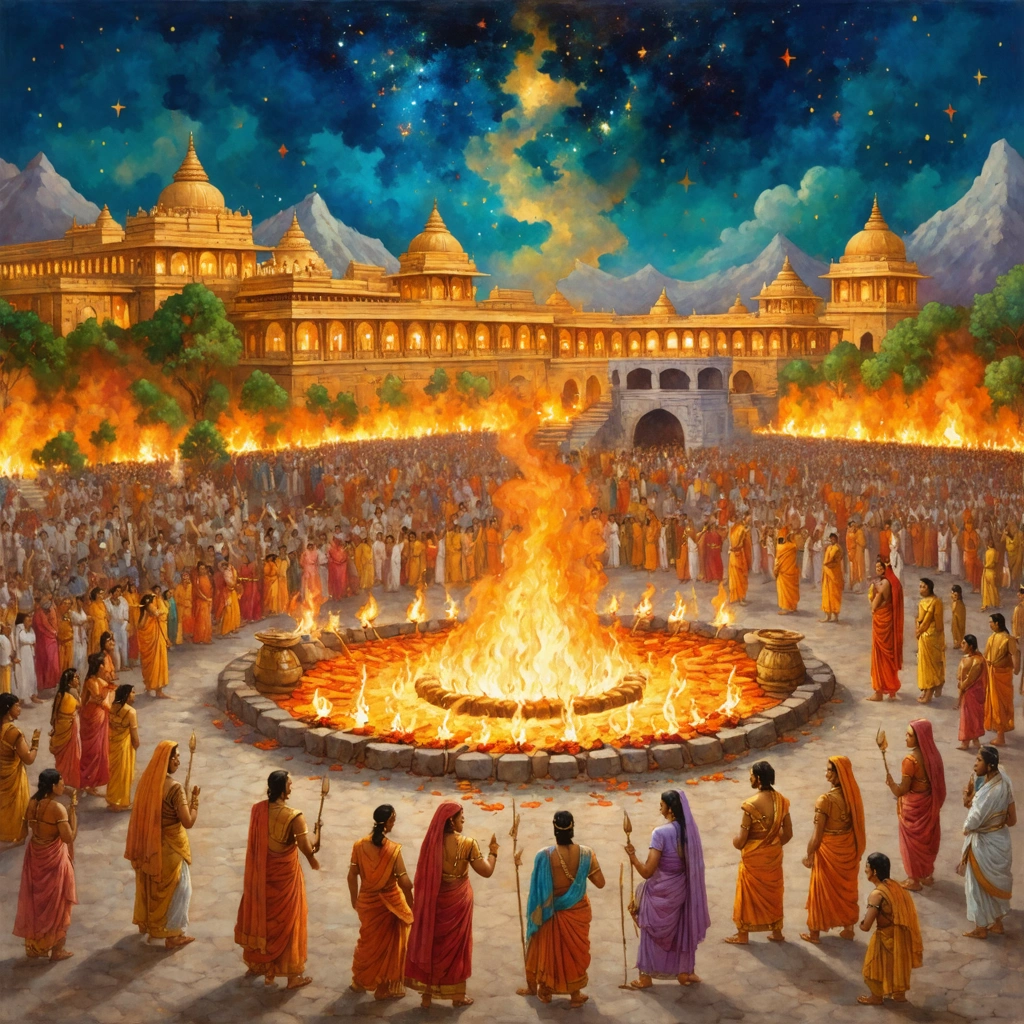
The Ever-Pulsating Heartbeat of India’s Festival Music
Imagine the vibrant streets of India during festival season—colors flying, drums beating, voices rising in unison. Now, add to that the soul-stirring chant of “Ramayan Ji Ki Aarti” echoing through temple courtyards, the devotional rhythm of “Shri Ram Aarti” drawing crowds together, and the nostalgic strains of “Shri Ram Teri Ganga Maili” weaving through the air. These are not just songs; they are living legacies that connect millions, transcending generations, faiths, and regions.
Yet, as the world races forward into 2025 with its tech-driven distractions and evolving cultural landscapes, many find themselves wondering: How is the music of India’s cultural festivals adapting to this new era? Is the timeless charm of these devotional melodies fading into the background, or are they finding fresh life amid changing tastes and technologies? For anyone who cherishes India’s rich heritage or wants to understand the pulse of its festivals, this exploration is more than timely—it’s essential.
Why Festival Music Matters More Than Ever
Music has always been the soul of India’s festivals. It’s the invisible thread that weaves people together, transforming celebrations into collective experiences of joy, devotion, and identity. But here’s the catch: in a world inundated with global pop hits, electronic beats, and streaming playlists, traditional festival music often struggles to capture the spotlight. This can lead to a subtle but profound disconnect—festivals risk becoming mere rituals devoid of the emotional resonance that only music can provide.
Take the iconic “Ramayan Ji Ki Aarti” for instance. This aarti is not merely a song; it’s a spiritual journey that invites devotees to relive the epic tales of Lord Rama. Yet, younger generations, exposed to a dizzying array of musical influences, might find it challenging to engage deeply with such traditional forms. Even “Shri Ram Aarti,” a cornerstone of many Ram Navami celebrations, sometimes competes with contemporary music styles for relevance in urban settings.
And what about “Shri Ram Teri Ganga Maili,” a melody that once defined a generation through cinema and devotion alike? Its haunting refrain still evokes powerful emotions, but will it continue to resonate as India’s cultural festivals evolve? These questions aren’t just academic—they touch the very essence of how cultural identity is preserved and passed on.
Bridging the Ancient and the Modern
Fortunately, the story doesn’t end with uncertainty. Across India, artists, communities, and cultural custodians are innovating—blending ancient devotional music with contemporary sounds, using technology to enhance accessibility, and creating immersive festival experiences that honor tradition while embracing modernity. This dynamic interplay ensures that songs like “Ramayan Ji Ki Aarti,” “Shri Ram Aarti,” and “Shri Ram Teri Ganga Maili” don’t just survive but thrive.
In this article, we’ll embark on a vivid journey through the musical landscape of India’s 2025 cultural festivals. You’ll discover how centuries-old hymns are being reimagined, how regional variations add kaleidoscopic richness, and how festival organizers leverage music to craft unforgettable moments. Whether you’re a music lover, a cultural enthusiast, or simply curious about India’s vibrant tapestry, this exploration promises fresh insights and inspiration.
Get ready to dive deep into the melodies that define India’s festivals, understanding not only their historical significance but also their exciting future. Because in 2025, the music of India’s cultural festivals is not just a backdrop—it’s the very lifeblood of celebration.

Exploring the Music of India’s Cultural Festivals in 2025
What is the significance of music in India’s cultural festivals?
Music plays a vital role in India’s cultural festivals, acting as a bridge between tradition, spirituality, and community celebration. Each festival is enriched by specific musical forms that evoke the historical and religious narratives associated with it. In 2025, as India continues to embrace both its heritage and contemporary influences, understanding the music behind these festivals offers a window into the country’s diverse cultural fabric.
For instance, devotional songs like Ramayan Ji Ki Aarti and Shri Ram Aarti are integral to festivals celebrating Lord Rama, such as Ram Navami and Diwali. These aartis are not only musical pieces but also spiritual rituals that foster collective devotion and cultural continuity. The lyrical content, melodic structure, and performance setting of these aartis contribute to their enduring popularity.
What types of music are typically performed during India’s cultural festivals?
India’s cultural festivals showcase a wide range of musical genres, including:
- Devotional Music: Bhajans, aartis, and kirtans that are performed in temples and community gatherings. Examples include Ramayan Ji Ki Aarti and Shri Ram Aarti, which are staples during festivals honoring Lord Rama.
- Folk Music: Regional folk songs and dances that highlight local traditions. These vary significantly across states, from Bhangra in Punjab to Garba in Gujarat.
- Classical Music: Performances of Hindustani and Carnatic music often accompany festivals, especially those with religious significance.
- Film Music: Popular Bollywood songs sometimes become intertwined with festival celebrations. For example, Shri Ram Teri Ganga Maili, a famous song from a 1985 Bollywood film, remains culturally significant and is sometimes played during Ram-related festivities.
How does the music of festivals like Ram Navami and Diwali highlight the cultural importance of Lord Rama?
Ram Navami and Diwali are two major Indian festivals that celebrate the life and virtues of Lord Rama. Music during these festivals serves multiple purposes:
- Ritualistic Function: Songs like Ramayan Ji Ki Aarti and Shri Ram Aarti are chanted to invoke blessings and create a sacred atmosphere.
- Storytelling: The music narrates episodes from the Ramayana, helping communities connect emotionally and spiritually to the epic.
- Cultural Identity: These musical traditions reinforce a shared cultural identity and promote intergenerational transmission of values.
Moreover, the inclusion of songs like Shri Ram Teri Ganga Maili in festival playlists illustrates how popular culture blends with religious observance, making the celebrations accessible and vibrant for younger generations.
What are some notable examples of festival music performances in 2025?
In 2025, several large-scale events and festivals across India have highlighted traditional and contemporary music relating to cultural festivals:
- Ram Navami Processions: Cities like Ayodhya and Varanasi host grand processions featuring live renditions of Ramayan Ji Ki Aarti and Shri Ram Aarti by renowned classical and devotional singers.
- Diwali Melas and Concerts: Urban centers organize music festivals where folk and Bollywood music, including songs like Shri Ram Teri Ganga Maili, are performed, bridging traditional and modern tastes.
- Virtual Music Events: In response to increasing digital engagement, several online platforms have streamed devotional music concerts, expanding their reach globally and preserving cultural expressions.
Why is understanding festival music important for cultural preservation and tourism?
Music is a living repository of culture. By understanding the unique musical traditions tied to India’s cultural festivals, one gains insights into the country’s religious practices, history, and social values. This understanding is crucial for:
- Cultural Preservation: Documenting and promoting traditional songs like Ramayan Ji Ki Aarti ensures they are passed down to future generations.
- Tourism Development: Festivals with rich musical components attract tourists seeking authentic cultural experiences, thus supporting local economies.
- Global Awareness: Showcasing these musical traditions on international platforms fosters cross-cultural appreciation and dialogue.
How can one experience the music of India’s cultural festivals in 2025?
To fully experience the vibrant music of India’s cultural festivals, consider the following approaches:
- Attend Live Festivals: Visiting festivals like Ram Navami in Ayodhya or Diwali celebrations in major cities provides firsthand exposure to traditional music performances.
- Explore Digital Platforms: Streaming services and cultural websites often feature playlists and live streams of devotional and festival music, including Shri Ram Aarti and other aartis.
- Participate in Community Events: Local temples and cultural organizations frequently organize singing sessions of Ramayan Ji Ki Aarti and other devotional songs, welcoming newcomers.
By actively engaging with this music, one not only enjoys its artistic beauty but also gains a deeper appreciation for India’s rich cultural heritage.


